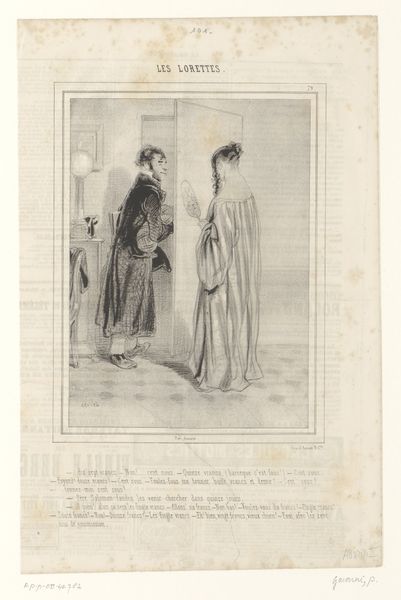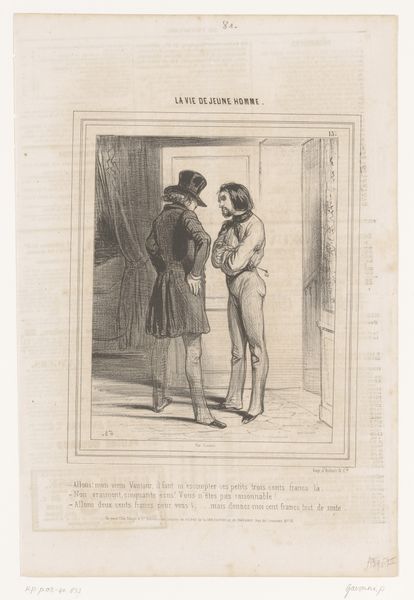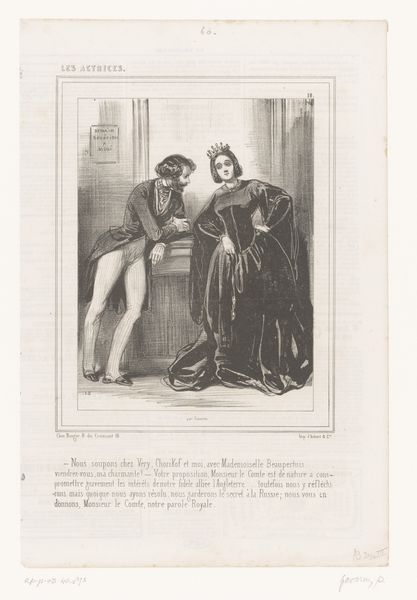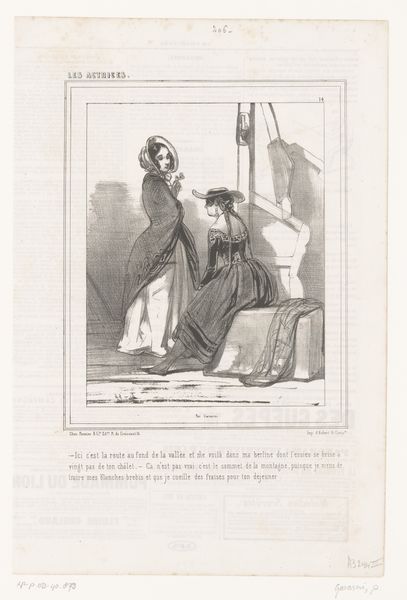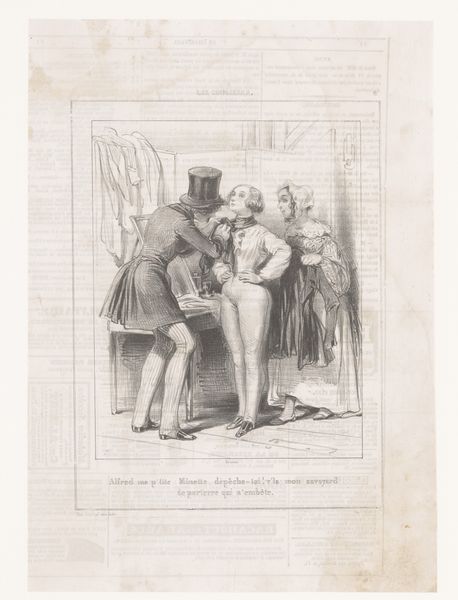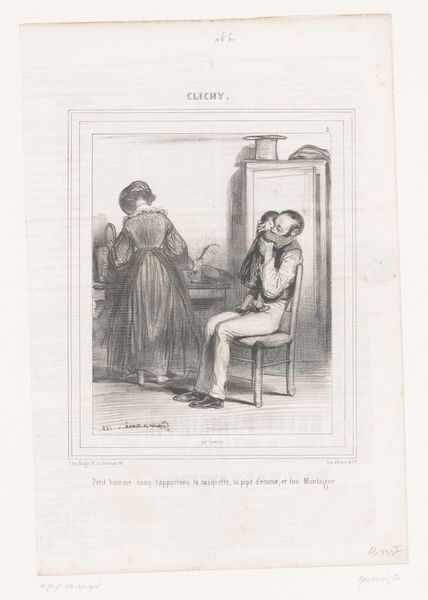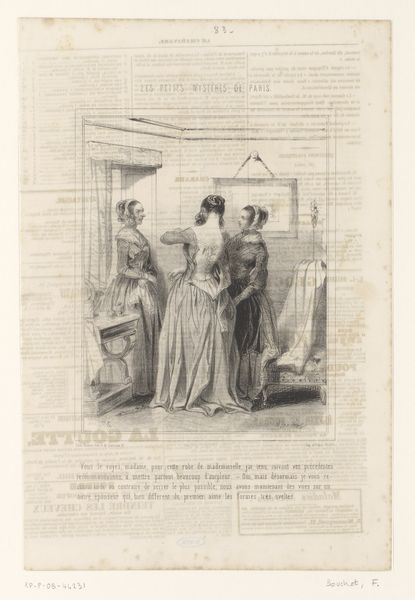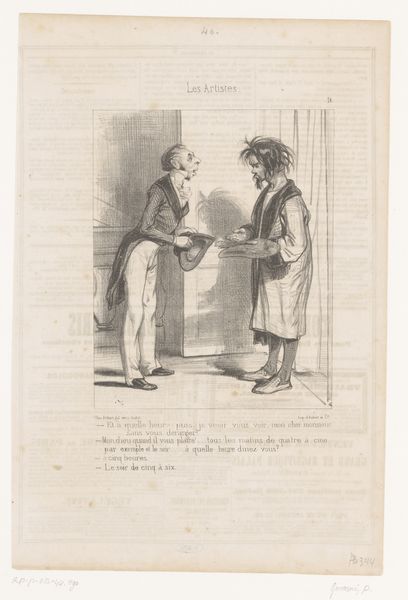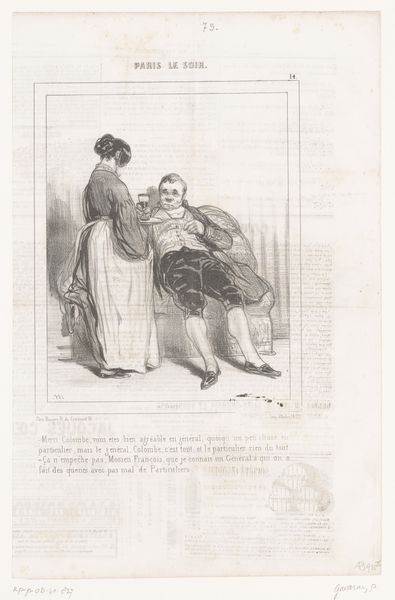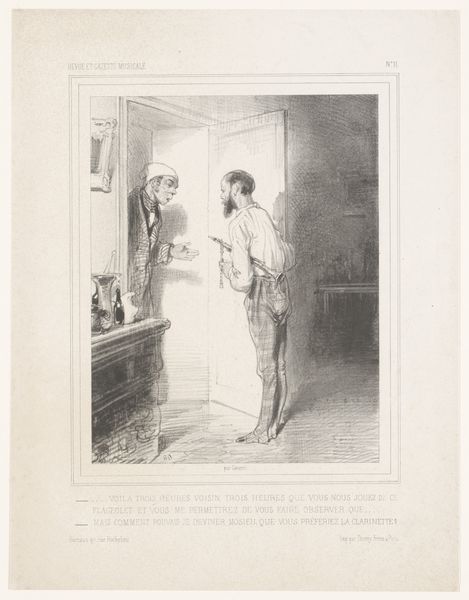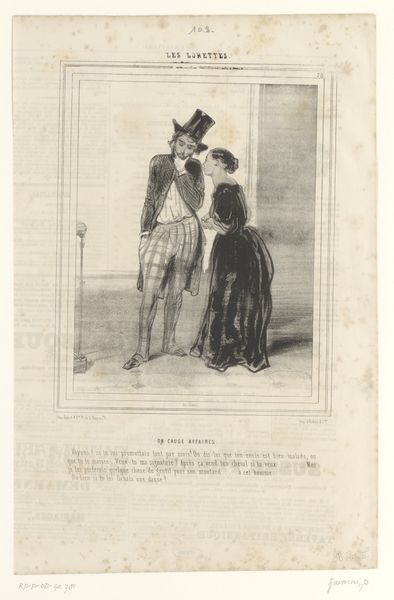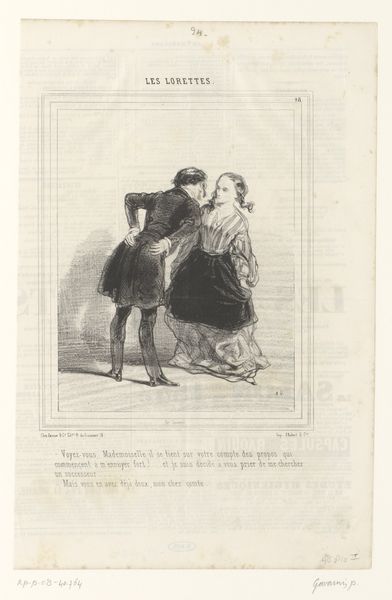
lithograph, print, etching
#
portrait
#
lithograph
# print
#
etching
#
caricature
#
romanticism
#
genre-painting
#
coin
Dimensions: height 363 mm, width 245 mm
Copyright: Rijks Museum: Open Domain
Curator: We’re looking at “Gevangene bekijkt in zijn cel een paar muntstukken in zijn hand,” which translates to “Prisoner looks at some coins in his hand in his cell.” It’s a lithograph by Paul Gavarni, created around 1840, now housed in the Rijksmuseum. Editor: The mood strikes me as melancholic. The use of grey tones and etching lines creates an almost palpable sense of confinement and despair, amplified by the slight tilt of the head and heavy eyelids on the prisoner. Curator: The composition is quite compelling. Notice the placement of the prisoner near the center, but slightly off-balance, drawing our attention to the coins in his hand. This simple gesture speaks volumes. The lines, though simple, create a lot of depth. Editor: It also underscores the gross inequities embedded within 19th-century carceral systems. The prisoner, likely incarcerated for debt or some petty crime born of poverty, is now scrutinizing the very instruments of his oppression, those few coins that symbolize his freedom and his continued entrapment. What is the nature of this “client”? A criminal, a debtor? How do economic systems criminalize everyday precarity? Curator: Gavarni was known for his social caricatures and romantic style, and we see elements of both here. While the print's stark realism hints at the harsh realities of prison life, the man's introspective gaze evokes a sense of Romantic-era sensitivity. Editor: I agree, and thinking about it further, it’s crucial to consider the gendered implications as well. While the etching ostensibly features a male prisoner, we also see a figure looking through the barred window. What role is this other person playing, and what does it suggest about gendered visibility within and without systems of confinement? Does she have less or more social power in that configuration? Curator: Perhaps she is equally trapped? Gavarni challenges our assumptions. By combining formal mastery with nuanced observations of his era, his composition evokes thought about its meaning within the structure. Editor: Exactly. By viewing this as a cultural artifact rooted in its historical conditions, we may find relevance for today's conversation about injustice, poverty, and the urgent necessity of prison reform.
Comments
No comments
Be the first to comment and join the conversation on the ultimate creative platform.
